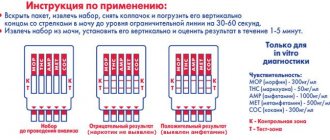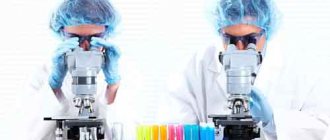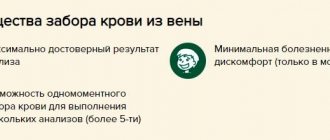Newborn boys and girls cannot explain how they feel or show where it hurts. Often, in addition to examination by doctors, tests are required to clarify the condition of the babies. In particular, stool examination helps evaluate the functioning of the digestive system. There are general recommendations and rules regarding the collection of material for research.
Baby
Why do stool tests?
Fecal analysis is part of a study aimed at identifying malfunctions in the baby’s body while searching for foci of inflammation. It is usually prescribed when a baby has digestive problems, which are manifested by stool upset and anxiety. You can suspect something is wrong by the appearance of the stool, especially if it contains foam, mucus, blood and an unpleasant odor.
Stool analysis also helps identify parasites living in the baby’s intestines. Children most often have pinworms, which cause itching and redness of the anus. They reproduce at a tremendous speed; in the evenings, females crawl out of the anus, laying eggs. As a result, the child experiences unpleasant sensations.
Coprology, or general stool analysis, is prescribed for a number of symptoms:
- nausea, vomiting;
- yellowing of the skin, whites of the eyes;
- blood in stool;
- bloating and pain in the abdominal area;
- a sharp decrease in appetite and weight loss;
- changes in the consistency, color, or smell of stool.
The study will determine how the digestive system functions, whether there are any foci of inflammation, and whether food is being digested. The test determines whether there are enough enzymes needed for organ function. It also makes it clear whether there is hidden blood. If the result is positive, then an additional test is prescribed, which will reliably indicate the presence or absence of internal bleeding. At the same time, the indicators of a general blood test, which is always referred for when inflammation is suspected, change significantly.
A carbohydrate test allows you to determine whether your baby has lactase deficiency. In this case, the stool is usually liquid and foamy. It can be both frequent and too rare. Parents usually have to help their child go to the toilet.
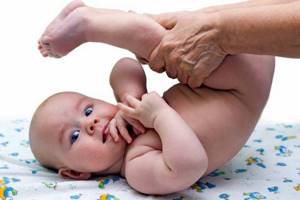
Help with constipation
Proper preparation for the test and submitting it on time will help determine the cause of the child’s ailments. Only a doctor, pediatrician or gastroenterologist can decipher the results.
Note! Indicators alone are not the basis for making a diagnosis.
The child’s well-being is important, which is assessed by the doctor during the examination.
Rules for collecting stool
You need to prepare for the analysis so that the results are as reliable as possible. They will help prescribe proper treatment and eliminate unpleasant symptoms in the baby.
Preparatory stage
Why does my child constantly cough for no reason?
Before the collection procedure, you need to prepare a sterile container:
- Special containers designed for feces are sold. They are sealed in a bag that does not need to be opened in advance. It has a lid that can be easily unscrewed and has a spoon for collecting material. The container is slightly smaller in size than a urine cup. It can be purchased at any pharmacy;
- If it is impossible to purchase a container, you cannot use paper containers or matchboxes. They will change not only the consistency of the material, but also affect its properties. In addition, they cannot be washed, so it is difficult to call them sterile. When there is no plastic container, you can use a glass one. You can use a jar of baby puree, washing it thoroughly and pouring boiling water over it;
- For some tests, laboratories provide special containers that are processed and made sterile.
If the child is undergoing treatment, then 3-4 days before the test the following should be excluded:
- laxatives;
- preparations containing enzymes and iron;
- rectal suppositories.
Otherwise, the analysis result cannot be considered reliable.
Note! It is necessary to remove in advance all agents and drugs that regulate and change intestinal function.
Before collecting the test, the child needs to urinate. The stool should not be mixed. If this happens, you will have to collect the material again.
Where to store
It is better if the stool is delivered to the laboratory within half an hour. If time is delayed, you need to store the container tightly closed in the refrigerator. No need to put it in the freezer. The optimal temperature is 2-4 degrees above zero.

Fridge
How long can you store
If a child goes to the toilet in the evening, pediatricians allow the possibility of storing feces until the morning. This is usually used before a general stool test or coprogram.
Some studies require storing the material for no more than 2-3 hours, others - 12. It all depends on their purpose. Therefore, before collection, you need to check with your doctor about the possible storage time. For example, feces for dysbacteriosis and parasites must be delivered to a medical facility immediately after collection. The most accurate result is obtained by analysis performed in the laboratory within 30-40 minutes.
Actions for constipation
How to collect feces for analysis in a baby with constipation:
- Massage the tummy, lightly pressing with your fingertips around the navel. You can bend the baby’s legs at the knees, doing something like a “bicycle” exercise. Also carry the child in your arms, with your back to you. Keep his legs bent and press them to his stomach. It turns out that the knees are at the level of the baby’s chest. These are the safest measures for babies, which can also be used for colic;
- Use glycerin suppositories. They do not contain medicinal components that could affect the results. Their main effect is muscle relaxation. For very young children, cut the candle into pieces; you can take a quarter. At the same time, make sure that there are no sharp edges or places that could harm the baby. You need to insert a candle a few millimeters, it melts quickly and also works instantly. Even if glycerol is detected in the analysis, the indicators necessary for making a diagnosis will not be affected.
Important! Do not insert pieces of soap, cotton swabs, smeared with cream or Vaseline into the baby’s bottom. It is also not recommended to use gas outlet tubes. All these methods are not beneficial and can injure the child. Even a candle is an undesirable method. But when the analysis is important and the risks are justified, as a last resort, you can resort to them.
How to donate stool
It is better if the feces are collected in the morning, on an empty stomach. If it is impossible to prepare the material at this time, we must not forget about storage conditions. The stool should be delivered to the laboratory in a sealed container. When surrendering, it remains closed. It is important not to forget to include a referral for analysis. Some jars have stickers where you can write the child's first and last name.

Containers
Other
Enemas and laxatives should not be used before the analysis. The child must go to the toilet on his own. If you had to give an enema to your baby, you should wait at least two days.
How to properly collect feces
Correctly collected material is a guarantee of obtaining results that reflect the current condition of the baby, and this is what is necessary for prescribing the correct treatment.
Collection instructions
How to understand that the mixture is not suitable for a baby
How to collect feces from a baby for analysis:
- You need to wait until the baby wants to go to the toilet, preparing a sterile container. It is important that this is a spontaneous process. When the child does this at the same time, there is no inconvenience. It is often impossible to predict in advance, so you need to take a sterile container and wait;
- Usually babies go to the toilet after eating. If the baby is almost a year old and sitting, then you can use the potty. Many mothers begin toilet training their children at 6-7 months. The pot must be washed well and wiped dry. Collect the required amount of material from the container with a spoon and close the lid tightly;
- You can take feces from a diaper or diaper, but you need to do this carefully, do not scrape it on the surface, so that the analysis does not contain unnecessary impurities.
How much feces do you need?
There is no need to put as much material into the container as will fit; 5-10 grams of feces is enough. This is approximately one teaspoon. Ideally, if its condition is semi-liquid, mushy. This is exactly the type of stool that a baby should have normally.
How to collect liquid stool
How to collect liquid feces from a baby:
- You can drain it from the surface of the diaper. You need to catch it before it gets absorbed. Immediately after defecation, remove the baby's diaper and transfer the material to a container;
- It’s good if you can put a clean oilcloth under the child so that you can drain it into a container. The main thing is not to use gauze or cloth sheets, otherwise there may be particles of materials in the analysis, which will affect its result.
There are special urinals. These are disposable test bags. They are sold in pharmacies. Their adhesive base is fixed on the child's skin. You can stick it to the baby's bottom and put a diaper on top. It is necessary to ensure that the baby does not toss and turn too much, otherwise the contents of the bag will spill out.
Note! You need to make sure that no urine gets into the analysis. Otherwise, it is better to collect the material again. Do not leave the urine collector for a long time - irritation may appear on the baby’s delicate skin at the attachment point.
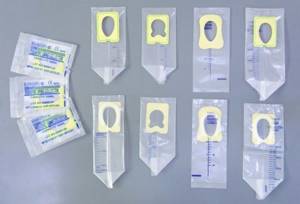
Urinals
What is a coprogram?
The coprogram is considered one of the most informative methods of stool analysis. Thanks to the study, the doctor can accurately determine the presence of dysfunctions in the stomach and intestines, identify diseases of the duodenum, inflammatory and infectious lesions of the gastrointestinal tract.
In infants, a coprogram may be recommended for digestive disorders, for example, frequent constipation or diarrhea. Sometimes pediatricians advise taking this test if the child’s stool changes color or consistency.
The coprogram helps to draw conclusions about the following indicators:
- the ability of the gastrointestinal tract to digest food normally;
- pancreas function;
- the speed at which food passes through the gastrointestinal tract. Sometimes, due to increased intestinal motility, beneficial substances from food do not have time to be absorbed by the body, as a result of which the child does not gain weight and develops slowly;
- presence of inflammation or bleeding;
- formation of intestinal microflora. Normally, the baby receives microflora from the mother. It takes some time for the intestinal microbiota to be fully formed.
Sometimes this process goes wrong, resulting in problems with digestion. The baby's coprogram allows us to judge with a high degree of accuracy whether the child needs to take probiotics or prebiotics.

Feces are collected in special jars, which are sold in pharmacies.
Features of collection for different studies
Collection and storage guidelines vary somewhat depending on the study. There are requirements determined by the purpose of the analysis.
Coprogram
Why does a child roll over on his stomach in his sleep?
Coprogram is a frequently prescribed test for infants. Thanks to it, you can determine how the child’s gastrointestinal tract, liver and bile ducts work. The study determines many indicators characterizing color, smell, consistency, and acidity. It also allows you to evaluate the presence of impurities, blood, mucus, starch, and fat.
How to properly give a coprogram to a baby:
- The material can be collected in the evening by placing it in a sterile container;
- Place in the refrigerator and store in the door. Never put it in the freezer;
- Deliver it to the laboratory tomorrow morning. Ideally, no more than 12 hours will pass between collection and delivery.
Worms
Before collecting a test for worms, you should not wash the baby using baby soap or foam. If you need to determine whether a baby has pinworms, the material is collected from the folds near the anus. You can do this with a cotton swab or apply special adhesive tape to your butt. After this, the tool is put into a bag or container and closed well. Typically, such procedures are carried out directly in medical institutions. They do not cause any discomfort or pain. The analysis is prepared within half an hour.
It is believed that the most reliable result is obtained by donating stool three times. In this case, you need to maintain an interval of 3 to 7 days. A blood test can also confirm the presence or absence of parasites. It is necessary to immediately deliver feces to the laboratory to detect Giardia, which periodically attacks the child’s body.
Note! To detect parasite eggs in stool, it must be fresh, just collected, and still warm.
hidden blood
Before taking a test for occult blood, it is necessary to change the baby's diet. To do this, exclude the following products:
- meat;
- fish and anything that contains iodine;
- iron-containing, for example, apples, peppers;
- green vegetables and fruits;
- buckwheat
It is also better not to give your child foods that can injure the mucous membranes in the mouth, for example, dry foods and crackers. If the child is breastfed, then the nutrition of the nursing mother needs to be adjusted. Also, do not abuse meat, fish and foods with iron.
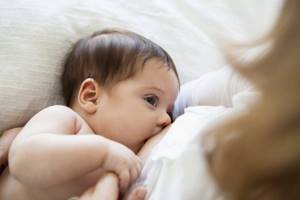
Baby on Guards
For “artificial” children, a lot depends on the composition of the mixture. You need to carefully study what microelements are contained in the baby’s diet. If you notice high iron levels, tell your doctor. He will determine whether this will affect the result of the analysis and, if possible, suggest an alternative option. For example, transfer the baby to another formula. In any case, you should not make such decisions on your own. The diet should continue for three days before the planned date of collection of material for analysis.
Bacteria
When it comes to detecting the presence of bacteria and identifying them, about 5 grams of material is required. If there is mucus or blood in the stool, they must be collected and placed in a container. It is better for him to be in the laboratory in two hours, no more.
Every mother is faced with the need to collect baby’s feces for analysis. Sometimes this has to be done urgently, but usually there is time to prepare for taking the material. You need to approach this process responsibly, know about the terms and conditions of storage, and the principles of collection. After all, the result of the study depends on this, which means the treatment designed to alleviate the baby’s condition.
How can a mother prepare for a test with a breastfed baby?
If you are breastfeeding, you should remember the following rules:
- do not eat foods that may cause allergies in your child. We are talking about citrus fruits, chocolate and eggs. For 48 hours before collecting stool, a nursing mother must adhere to a strict diet, giving preference to simple food;
- Do not drink alcohol or smoke under any circumstances;
- A nursing mother should not eat foods that contain large amounts of sugar, as well as fatty and smoked foods.
